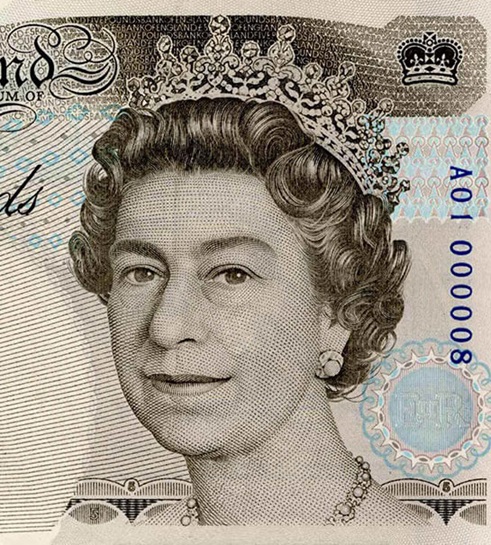
On paper, the Queen lives on. While Queen Elizabeth II reigned as the British monarch for 70 years, her face has been in print for far longer. Since 1935, her likeness has graced the creases of bank notes in Canada. In more than 30 countries and territories, treasuries printed her majesty from 1 cent notes in Hong Kong to $20 bills in New Zealand.
Use of the monarch’s portrait peaked around the 1960s. Though she became queen the decade prior, it wasn’t until 1960 when she appeared on Britain’s currency. She was the first monarch to be featured on Bank of England notes thanks to special permission from the British treasury.
Because of the history of the British Empire, the introduction of the Queen’s image to bank notes in British-held territories and colonies – like many Caribbean islands and Hong Kong – was in many ways a fait accompli. But in many of these nations, her image endured through sovereign independence movements, at least for a time, maintaining her symbolic legacy as the head of an aged global empire.
Her face has been printed on currency on every continent except Antarctica, where there is no centralized bank.
With the queen’s death, the future of her image on currency around the world is up in the air. Bank notes featuring her in Australia, New Zealand and Canada will update with the new monarch, King Charles III, but the process will take some time.
The Bank of Canada said its current $20 bank note is designed “to circulate for years to come.” The Reserve Bank of New Zealand said it will issue all of its stock of coins depicting the queen before new ones go out with King Charles’ image.
For Britain itself, the Bank of England’s governor reassured the public in a statement, saying that “current bank notes featuring the image of Her Majesty The Queen will continue to be legal tender.”
In Antigua and Barbuda leaders plan to hold referendums within the coming years on officially casting off the monarchy. Whether they continue to circulate the queen’s image on their currency likely depends on if they remain members of the Eastern Caribbean Central Bank. Many former outposts of the British Empire have been engaged in a public reckoning over the legacies of colonialism, and part of that dialogue is how they represent members of the British royalty on legal tender.
For much of the last century, the queen’s face has become emblematic for Britain. Though it’s hard to imagine Charles’s likeness attaining Elizabeth’s global stature, the past may tell us what’s in the future.
For instance, in the British overseas territory of Saint Helena, the queen shares opposite sides of a five pence coin with Jonathan the giant tortoise, a local resident. At approximately 191 years of age, this ancient reptile has seen the reigns of eight British monarchs end: King William IV; Queen Victoria; King Edward VII; King George; King Edward VIII; King George VI; and Elizabeth.
An update may be in store after Charles’s coronation.
(c) 2022, The Washington Post · Daniel Wolfe












Who cares?
It won’t be anymore once the world finds out the truth about her. Good thing new gold-backed currencies coming up worldwide.
What about the Canadian dollar? Isn’t her face on their currency as well?